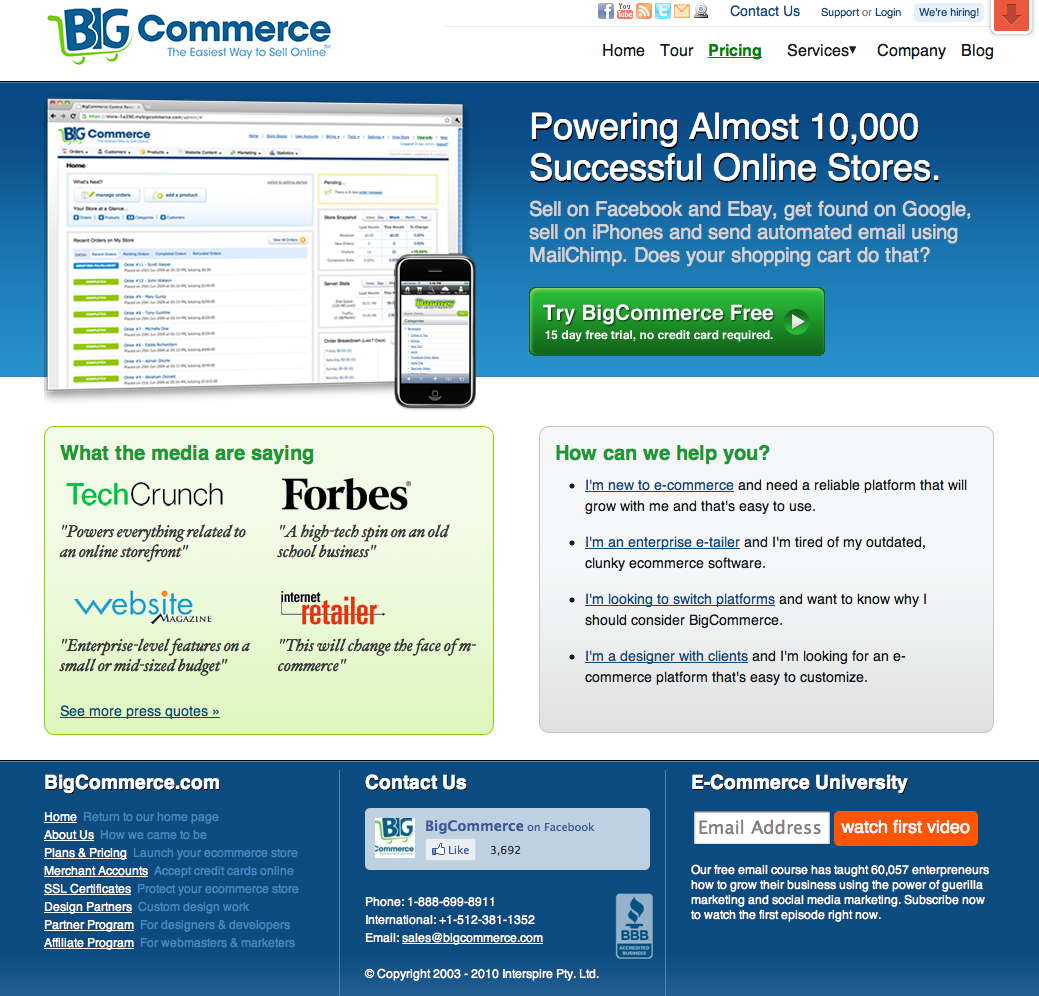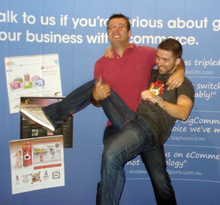This is part of our “Bootstrapped, Profitable, & Proud” series which profiles companies that have over one million dollars in revenues, didn’t take VC, and are profitable. Note: Mitchell Harper will be answering reader questions in the comments.
 “I was building online stores for a few years and the off-the-shelf options were horrible,” explains Mitchell Harper, Co-Founder and Co-CEO of BigCommerce. “There were a lot of open source offerings, but they were basic and you needed a developer to customize the code for you. We wanted to build shopping cart software that was innovative and would give you an online store with most of the functionality of Amazon.com or Zappos.com for a few hundred bucks.”
“I was building online stores for a few years and the off-the-shelf options were horrible,” explains Mitchell Harper, Co-Founder and Co-CEO of BigCommerce. “There were a lot of open source offerings, but they were basic and you needed a developer to customize the code for you. We wanted to build shopping cart software that was innovative and would give you an online store with most of the functionality of Amazon.com or Zappos.com for a few hundred bucks.”
That desire led to BigCommerce, which is now approaching 10,000 paying customers. According to Harper, the company has grown 480% over the last 4 years and is the fastest growing ecommerce platform in the world. It was ranked the
14th fastest growing software company (#633 overall) on the Inc 5,000 list for 2010 and it now has 50 employees spread between its Sydney, Australia and Austin, Texas offices.
From chat room to company
Harper (right in photo below) and partner Eddie Machaalani (left) had each started a content management system already — Harper built SiteWorks, Machaalani created WebEdit — when they met in a programming chat room. They realized they were both in Sydney and eventually decided to join forces to build software together under the name Interspire.
 When they launched the Interspire Shopping Cart, it attracted thousands of businesses. Customers weren’t completely satisfied with the installable software though. Harper says, “We had so many people telling us how awesome it was, but that they didn’t want to have to deal with finding their own servers, installing it, upgrading it, etc. So that’s where the idea for BigCommerce came from.” BigCommerce lets customers create customized online stores via the web. These retailers can then access orders, products, inventory, and more without ever having to download any software.
When they launched the Interspire Shopping Cart, it attracted thousands of businesses. Customers weren’t completely satisfied with the installable software though. Harper says, “We had so many people telling us how awesome it was, but that they didn’t want to have to deal with finding their own servers, installing it, upgrading it, etc. So that’s where the idea for BigCommerce came from.” BigCommerce lets customers create customized online stores via the web. These retailers can then access orders, products, inventory, and more without ever having to download any software.
According to Harper, ease of use (e.g. embedding help tips and links to knowledge base articles in the app) is a big reason for the shopping cart software’s success. “We really had to focus on building simple user interfaces and keeping the complex stuff in the background,” he says.
Constant iterations have also helped. “We release major new features every 6-8 weeks and we’re working on getting that down to once a week. We look at BigCommerce as part of a larger pie that business owners need to compete. The other parts of the pie are order management software, accounting software, and analytics software. So making these integrations simple means BigCommerce can be used by hundreds of different types of businesses.”
Continued…




 When they launched the Interspire Shopping Cart, it attracted thousands of businesses. Customers weren’t completely satisfied with the installable software though. Harper says, “We had so many people telling us how awesome it was, but that they didn’t want to have to deal with finding their own servers, installing it, upgrading it, etc. So that’s where the idea for BigCommerce came from.” BigCommerce lets customers create customized online stores via the web. These retailers can then access orders, products, inventory, and more without ever having to download any software.
When they launched the Interspire Shopping Cart, it attracted thousands of businesses. Customers weren’t completely satisfied with the installable software though. Harper says, “We had so many people telling us how awesome it was, but that they didn’t want to have to deal with finding their own servers, installing it, upgrading it, etc. So that’s where the idea for BigCommerce came from.” BigCommerce lets customers create customized online stores via the web. These retailers can then access orders, products, inventory, and more without ever having to download any software.
